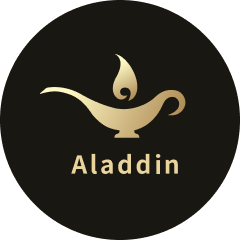In the world of manufacturing, two commonly used approaches are Original Design Manufacturing (ODM) and Original Equipment Manufacturing (OEM). These strategies provide businesses with options for outsourcing the production of their goods while offering distinct advantages and considerations. This article will delve into the differences between ODM and OEM, helping you make an informed decision when choosing the right manufacturing strategy for your business.
Understanding ODM
ODM, or Original Design Manufacturing, is a manufacturing approach where a company designs and develops a product, and then partners with a third-party manufacturer to produce it. The manufacturer typically handles the entire production process, from sourcing materials to manufacturing and packaging. ODM offers businesses the advantage of leveraging the manufacturer’s expertise and capabilities while focusing on product innovation and marketing.
Benefits of ODM
- Cost Efficiency: ODM allows businesses to reduce costs associated with product design and development. By partnering with an experienced manufacturer, you can take advantage of their economies of scale, purchasing power, and production efficiency.
- Speed to Market: With ODM, you can expedite your product’s time to market. The manufacturer’s existing infrastructure and expertise enable faster production and delivery, helping you meet consumer demands and capitalize on market trends.
- Reduced Workload: By outsourcing manufacturing, businesses can free up internal resources and concentrate on core competencies such as research, development, and marketing. This streamlined approach allows for more efficient resource allocation and improved overall business performance.
Understanding OEM
OEM, or Original Equipment Manufacturing, involves a company outsourcing the production of components or complete products to a third-party manufacturer. Unlike ODM, the manufacturer produces goods based on the client’s specifications, design, and branding requirements. The OEM approach allows businesses to focus on marketing, sales, and distribution while relying on manufacturing experts to bring their vision to life.
Benefits of OEM
- Customization and Brand Control: With OEM, businesses retain control over the design, specifications, and branding of their products. This allows for customization to align with the brand image and target market preferences.
- Quality Control: As the client, you have direct oversight and control over the quality standards of your products. This ensures that the final output meets your specific requirements and maintains consistency in brand quality.
- Brand Loyalty: By leveraging OEM manufacturing, businesses can build strong brand loyalty through consistent product quality and performance. This helps establish a reputation for reliability and fosters trust among consumers.
Choosing the Right Strategy for Your Business
Selecting between ODM and OEM requires careful consideration of your business objectives, resources, and market dynamics. Here are a few factors to consider:
- Product Development Capabilities: If your business focuses on product innovation and design, ODM may be the right choice. It allows you to tap into the expertise of manufacturers and leverage their capabilities to bring your ideas to life.
- Brand Identity and Control: If maintaining strict control over your brand identity and product specifications is crucial, OEM provides the necessary flexibility and customization options.
- Time to Market: If speed is of the essence, ODM can offer faster production and delivery, enabling you to swiftly respond to market demands and trends.
- Resource Allocation: Assess your internal resources and determine if outsourcing manufacturing aligns with your business goals. OEM allows you to focus on sales, marketing, and distribution, while ODM reduces the workload associated with product development.
Conclusion
Choosing the right manufacturing strategy, whether it’s ODM or OEM, is a critical decision that impacts your business’s success. Carefully evaluate your goals, product requirements, and available resources to determine which approach aligns best with your needs. ODM offers cost efficiency and speed to market, while OEM provides customization and brand control. By making an informed choice, you can streamline your supply chain and position your business for long-term success in the competitive marketplace.
